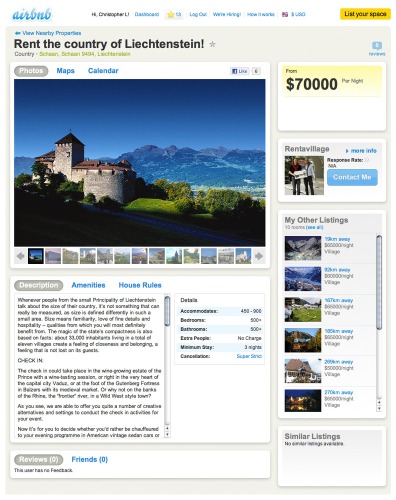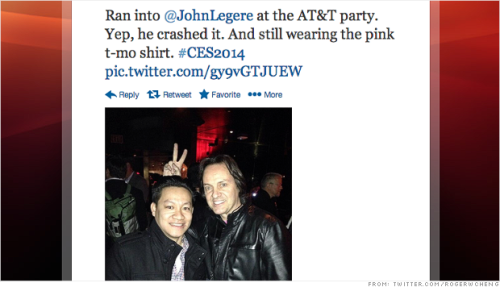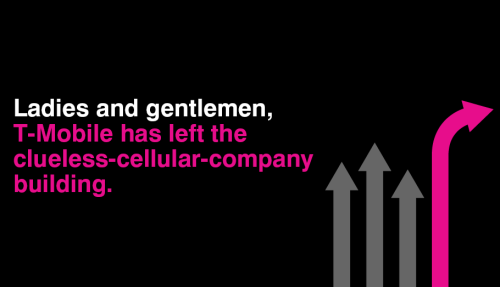
Smart business owners know that getting in the news is great for business. Unfortunately, most have never had the experience of working as a journalist and having an uninspired story idea rejected by an editor. They simply don’t know what’s newsworthy and what’s not newsworthy. As a result they end up sending out boring… flavorless… press releases announcing things that no one but the CEO of the company cares about.

Unfortunately, Michael has slipped into a waking coma after reading the boring press release the CEO wants sent out.
Let’s not give them too much flak though, the truth is CEO’s are passionate! They are excited about every new development that happens within their company. To them everything is newsworthy, but that doesn’t mean that they should be calling up the national media telling them they repainted the office bright colors and as a result now have higher employee morale. (If your CEO is planning on announcing something like this, please for the sake of the public good, stop them, boredom induced comas are dangerous things!).

The wastepaper basket: a graveyard for many a boring press release; however, the email spam folder is the more common final resting place these days.
Knowing what’s newsworthy – and what’s not – has a major benefit besides preventing comas; it just plain makes for good media relations. Developing good relationships with the media is vital and it’s actually pretty simple. Send journalists newsworthy information and don’t ever… ever… send them boring stuff that they don’t care about. So how do you know what stories journalists will put on the front page of the Sunday paper and what stories will be crumpled up in a tight ball and used for playing trashcan basketball? Well, you can always take a look at the various principles that make something newsworthy, but I thought it would be more helpful to give you three types of stories that journalists just can’t help but print.
Man Bites Dog
There’s an old newspaper saying, “When a dog bites a man, no one cares. When the man bites back – now that’s a news story.” Things that are surprising, unexpected and, well… new make the news. You need to find a way to make your product, widget or thingamabobs surprising and unexpected. Unless your new product is actually the key to curing cancer, a hover board or a robot that will mow your lawn and cook you dinner it’s unlikely that it’s really that surprising or unexpected and reporters aren’t likely to give it much more than a yawn unless you get creative. Creative? Now what do I mean by “get creative?” Well, instead of just listing off the specs of your new gadget or features of your new service, dig deeper and tell the stories of how your users have been able to use it in new, unexpected, yet useful ways. For example, AirBnB, a website that allows you to rent rooms from just about anyone, has been able to get a lot of attention for the creative and unusual places that people have listed for rent on their site. You can actually rent the entire country of Liechtenstein for a night. If an entire country is a bit much ($70,000 a night) and you’d like to go smaller, you can always rent out the trunk of this guy’s Tesla in Arizona. AirBnB was able to get a ridiculous amount of press over these unusual ways that people were using their service. So do some digging and figure out a way you can change your press release from a generic “dog bites man” story to an unexpected “man bites dog” story that will have reporters wagging their tails in excitement, uhhhh… I mean sharpening their pencils. Surely you can look around and find some unique and newsworthy ways your product or service can or is being used.

I think this falls into the, “Hey, if you’ve got that kind of money, why not?” category.
David and Goliath (the underdog)
Everyone loves a good underdog story and guess what, so does the media. An underdog like David using an innovative and surprising method (a sling and a rock) to take out the big bad giant Goliath is frankly just a lot more entertaining than hearing about how the big Fortune 500 companies (Goliaths) of the world are still dominating. Nobody wants to see Goliath win. They want David to win. They want the undersized but spirited Rudy to win. They want Rocky, bruised and battered, to stumble to his feet in the 15th round after knocking out Apollo Creed and claim sweet, sweet victory. A key component to the underdog story is having a unique, surprising, unorthodox and even rebellious method that makes you better than the big guys.

That one time T-Mobile CEO John Legere crashed an AT&T party wearing a pink T-Mobile shirt, got kicked out and CNN covered the story, giving T-Mobile free publicity.
A great example of a company that has used the underdog angle to great effect is wireless carrier T-Mobile. T-Mobile for a long time was the smallest of the major carriers. They decided to embrace this role and called themselves the “uncarrier” and found a rebellious way to take on their bigger Goliath-sized competitors. They did the unthinkable and got rid of contracts, gave their customers unlimited text, minutes and data and did this all for cheaper than their competitors. T-Mobile CEO, John Legere, gave this story teeth by personally taking upon himself the role of an up-and-coming, scrappy, underdog, prizefighter and sent taunting tweets and used onstage trash talking to position himself as single-handedly taking on the entirety of the mind numbingly boring and soul sucking wireless industry. One time he even sent out a press release where he compared AT&T to the death star (it’s highly entertaining and worth the click). Unsurprisingly, this press release got a huge amount of, wait for it… press. The media has loved T-Mobile’s David and Goliath story and T-Mobile is currently the most talked about wireless carrier. So, if you’re a small business, or at least smaller than your competitors, you can tell this story too. Highlight your company’s humble beginnings and your innovative angle for taking out the bigger, better resourced competitors; taunt the Goliath’s to their faces and tell the media all about it. They’ll eat it up.


Blake Mycoskie, Founder of TOMS, Wild-Eyed Crusader.
The Crusader
Deep down even the most hardened, jaded reporters are really crusaders at heart. They want to change the world, or at least they did when they started out as a naïve junior reporters making next to nothing and working crazy hours. As a result, there’s nothing they like more than seeing someone with that same idealism, passion and drive. Want to make some news? Change the world. Take up a crusade and let everyone know about it. TOMS is a great example of this crusader mentality and has a policy of giving away a pair of shoes to someone in need for every pair they sell. This “one for one” motto gripped the public’s attention and journalists from the Los Angeles Times to Vogue began writing about TOMS’ crusade when it was nothing more than a twinkle in its founders eyes. The enormous amount of publicity TOMS was able to receive allowed it in just eight short years to go from a bootstrap startup operating out of an L.A. apartment strewn with unfolded laundry and boxes of TOMS’ shoes to a benevolent giant of a company that is now valued at over $625 million. Oh and TOMS has now given away more than 10 million pairs of shoes. It turns out that it truly is better to give than to receive. If you feel like you could use some of this positive publicity, find a cause that you’re passionate about and that will hit home for your customers. Then get up and do something about it. By the way, changing the world is always newsworthy, so after you make your small dent in the universe, write a press release, hold a news conference, post about it on your social media, you get the idea. You’ll get positive publicity for your company, you’ll bring awareness to a cause and you may even feel kind of, well… “good” inside.
The Final Chapter
Remember, above all, journalists are story tellers. Don’t send them a pitch filled with meaningless buzzwords or try to sell them on just the specs; sell them on love, hope and courage; tell them a story. There’s plenty to choose from, certainly more than just the three ideas I listed above. If you need help, don’t worry, the team here at Laura Burgess Marketing will tell your story for you. It’s what we do.
The End.

